|
We all have a choice when we mount up--to wear a helmet or not. The choice is up to the individual. Below is a handy quiz to help you decide if you should wear a helmet when you ride: Answer the following questions as either TRUE or FALSE as they apply to you: Now, tally up your responses: for every time you answered “true,” give yourself 1 point. For every time you answered “false,” give yourself 5 points. Questions 1-3 – If you answered true to these questions, congratulations on your achievements! These three things will undoubtedly help you stay topside and therefore reduce the risk of a Traumatic Brain Injury (TBI) from a fall. Unless #7 is False—that significantly reduces the amount of safety your level of skill/experience provides you. Questions 4-10 – yes, I’m being a smart-ass, but these are the things we don’t think about. If I had a nickel for every time someone implied they were somehow exempt from brain injury because they were (place ridiculous claim here), or how it’s their body, their choice (which is true, it is)—I’d have a barrel full of nickels to donate to the Brain Trauma Foundation. The fact remains, horses are unpredictable, people make mistakes, freak accidents happen, and gravity is a constant feature of planet earth. Questions 11-15 – This is really the point of this little exercise—to raise awareness that your decision to wear (or not wear) a helmet is not only about you. Unless your answer to questions 12-14 is “true,” then…well, no still not just about you, because someone will have to take care of you. Post TBI injury care can include (but is not limited to): teaching sufferer how to walk, feed self, wipe bottom, speak, move arms, move legs, grasp objects, write, and read—hopefully you will be able to relearn all those tasks. Otherwise you may need someone to clean and maintain your respirator, change your diaper, bathe you, feed you (or clean your feeding tube), turn you so you don’t get bed sores, etc. A recent study discovered that the annual cost of treating/managing a person with a traumatic brain injury (TBI) ranges from $25,000-$81,000 every year for the life of the patient. The daunting cost of treating/managing the TBI patient is compounded by the fact the sufferer of the TBI is often unable to return to work at the same level or in some cases, at all. The study further found divorce was not uncommon with TBI sufferers in the years following their injury, citing extreme emotional and financial stress as the reason for divorce or separation. If you have no family, no friends, and no money, and/or not enough insurance, then your lifetime care will fall on the taxpayers and the welfare system. You might now be thinking, “Well, why do anything risky? Why drive, why fly, why do extreme sports, why keep riding?” My goal is not to scare you out of everything fun. Have adventures, drive on the interstate, ride that crazy mare that hates everyone, jump the big jumps, climb the mountain, go to an Elephant rally wearing a Donkey shirt—do those crazy, fun, dangerous things if the thought moves you, but take the safety precautions available to you—buckle your seat belt, wear the helmet, learn how to tie good mountain climbing knots, and leave the Donkey shirt at home—or avoid the Elephant rally—whichever. It just makes good sense. Oh yeah, scoring the quiz: If you scored anywhere from 0-75 points: you should definitely wear your helmet. 76 points or more: check your math, and definitely wear your helmet. Every ride, every time.
5 Comments
Years ago I was watching a woman riding her horse over fences. Each time the horse landed after a fence, he threw his head up and bolted. The rider would then jerk the horse around in a small circle, pulling his head around until it nearly touched her boot at which point she would smack him with her riding crop and proceed to make several circuits of the arena at a brisk trot while see-sawing the reins so violently the horse’s head wagged back and forth.
After the horse had received this “training,” the woman once again rode him to the fence; he jumped it willingly but upon landing, threw his head up violently and bolted. The woman screamed at the horse and went back into her “training” mode. She yelled something to her companion who was watching from the ground, about the new, stronger bit not working. Then she proceeded to jerk mercilessly on the horse’s mouth while spurring him relentlessly. It baffled me that this obviously kind horse continued to willingly approach and jump the fence while receiving this treatment from his rider. It further baffled me that the problem, which was clear to me after the second jump, seemed to completely elude the self-proclaimed trainer and her companion: each time the horse landed, the rider lost her balance and snatched him in the mouth. The horse was trying to escape the pain she was inflicting on him by her incompetent riding. She had failed to develop an independent seat, and her horse was suffering for it. I wish I had been brave enough then to speak out in defense of the horse but I was young and lacked the confidence needed to approach this intimidating woman. I watched her ride toward the fence and yet again make the same mistake, then punish the horse for her incompetence. “Go get the martingale!” she yelled to her companion, “I’ll make him keep his head down!” My stomach churned and I whispered a prayer for the horse before turning back to my work. That woman was not a rider, she was a parasite. A parasite, by definition is something that attaches itself to a host and harms it. The parasite is completely oblivious to (or perhaps just doesn’t care about) the harm it is causing the host. It only takes but never gives. There is not a reciprocal relationship; the parasite is the only one that gets any benefit. Parasites come in many forms: Captain Cram and Jam – holds the reins as tightly as possible while relentlessly kicking and spurring the horse in an effort to “get him in frame” Inspector Gadget – this person is always looking for the next great training gadget to force her horse to do what she hasn’t prepared him (or perhaps herself) to do. Training staples include harsh bits, a martingale (or training fork), draw reins and side reins See-sawer/plane flagger/goat milker –these are the individuals whose hands never stop moving – jerking up, jerking down, to the side, etc. These are easy to recognize as they are the ones riding the horse with the gapping open mouth, chin tucked in chest (usually preceded by nose pointing at the sky), and/or head wagging from side-to-side. These parasites tend to flock to “magic bits” selecting increasingly harsh bits as their horse’s mouth becomes scarred and deadened. The Know-it-all – Usually this is the person who either has had a few lessons and won a couple ribbons and therefore is a self-proclaimed trainer or can take the form of a person who has decades of experience with horses but has yet to learn anything The Blissfully Ignorant Weekender – this person takes old Frank out of the pasture once or twice a summer and sits crookedly in the saddle for a 4 hour trail ride on an out-of-shape horse. Conversely, a true rider is not afraid to do the work it takes to become a good rider. She puts in the years of work it takes to develop an independent seat, she seeks to understand the horse, when a “behavioral issue” arises, she first looks at herself for a cause, then considers the possibility of a physical issue with the horse and lastly looks for an actual behavior that needs to be modified. A true rider wants to build a relationship with the horse; she works to ensure the horse is happy to do his work. She also works to understand the horse’s physical capabilities and to ensure the horse is physically able to do the work it is being asked to do. She doesn’t rely on training gadgets as she understands 99% of the time such devices serve only 3 purposes: 1. Cover up bad riding 2. Cover up holes in training 3. Force a horse that is not mentally and/or physically prepared to do the work it is being asked to do. So, ask yourself the tough question: are you a parasite or a rider? The next time you run into a “behavior problem” with your horse consider the whole picture: is it something you are doing (sitting off balance, a poor cue, bouncing hands, etc.)? Is your horse in pain? Have you physically and mentally prepared your horse to do what you are asking him to do? Are you trying to ride above your level? Are you riding more horse than you can handle? I’m not claiming to be perfect. I’ve made (and continue to make) mistakes, I’ve subjected horses to unfair training practices; I’ve blamed horses for my shortcomings. BUT in more than 25 years I have never stopped learning. I keep an open mind and am always working to improve my techniques, looking for ways to teach the horse in a way she understands, and always working to keep my horse comfortable, happy, and glad to do her work. Our horses are a gift and most of them give of themselves until it hurts and even then, keep on giving. Learning to ride in a balanced, independent seat without relying on training gadgets to achieve artificial results is the least we can do for our horses. Pay attention to what your horse is telling you, and you both will benefit. You will connect with your horse on the deepest level and, by being a rider rather than a parasite; you can add many sound and happy years with your horse! 9/30/14 -- WOW! The response to this post has been amazing! I wrote this in-part because I was feeling quite alone in my horse training philosophy so I am thrilled to see there are so many like-minded people in this world! If you like this post, you may also enjoy these similarly-themed posts found HERE Thanks so much for sharing! 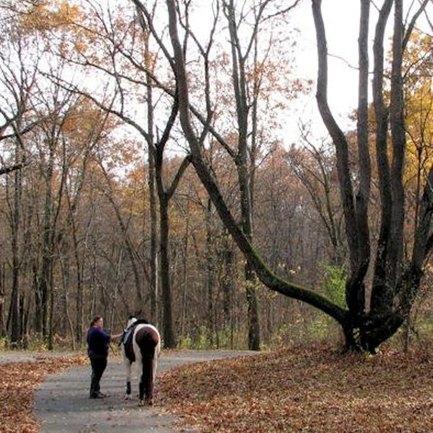 Photo Credit: Elizabeth Keesler Photo Credit: Elizabeth Keesler Many people watch me work with my horse, Farletta and wonder why can’t their horse be the same? By that I assume they mean the version of Farletta who stands quietly, follows willingly, rides without a bridle and responds to the slightest shift of weight in the saddle or the most subtle of visual cues from the ground; not the version of the Perfect Princess when she loses her patience and succumbs to the “Four P’s” – pacing, pawing, prancing and (inappropriate) peeing. What people don’t realize is it has taken years of work to get Farletta to be the horse she is today. And she is still learning, we both are. Sure, we have come a long way from the little mare who used to jump out of the arena, break her halter and run away, and lay down while I mounted her but it has taken hours upon hours of patience, consistency and flat out hard work. The change was gradual, it didn’t happen in six months or even a year – it is ongoing. Each time we crossed a hurdle, a new one would pop up. That is horse training. That is life. Training a great horse involves cultivating a great relationship. Taking the time to work through the (sometimes seemingly endless) problems, learning to communicate in a way your horse understands, learning to actively listen (not just seek to be heard), and always approaching the relationship with kindness and a gentle but firm hand. You will take great steps forward and at times you will stumble backwards. That is horse training. That is life. A horse is a living creature and just like people, they have different personalities, different learning styles, different physical capabilities and different mental capacities. It is your job to learn about your horse, how that horse thinks, how s/he learns, and how s/he communicates. Often behavioral problems stem from a lack of understanding on the part of the horse, and/or a breakdown in communication between the horse and handler. A horse that has been abused or is being re-purposed has a special set of circumstances. If the horse was in an abusive situation for many years or a non-abused horse moving from a completely different environment with a different set of “rules” (such as a racing environment) then you must not only build the relationship but you must undo the negative the horse has already learned. This won’t happen quickly, if it took five years for the horse to develop the bad habits and behaviors it has today; is it unreasonable to expect it to take as long to undo the damage? Building a relationship with your horse is a long term commitment. Just as in life, we all make mistakes and that is OK. This is how we learn. In a future post I will discuss different ways we can listen to what our horses are telling us. Until then, give your horse a carrot and a scratch on the neck from me.
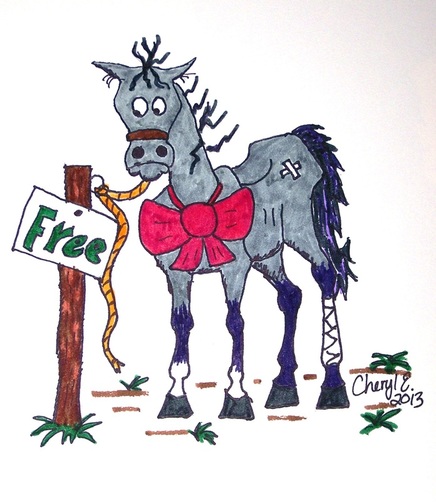 10 things you wish you'd known before you got your "free" horse! 10. Aside from the peppermint candies you give as treats (which you acquire for free at Pizza Hut), the buying price of a horse is generally the cheapest thing about horse ownership 9. If the horse has no teeth it does not mean it is young and they haven’t grown in yet 8. The “He’s real quiet with the kids” statement was actually referring to the neighbor kids who come throw apples over the fence; they’ve never actually handled him 7. “He’s a real easy keeper” means you will spend more money repairing fences, replacing stall boards, buying/replacing grazing muzzles, and paying the vet to tube your over-indulgent escape artist horse than you ever would have spent on feed. 6. The “He really loves his work” statement would hold more water if his best friend wasn’t a barn cat named “Work” 5. “Oh, we never have to tie him, we just tack him up in his stall” statement is actually incomplete, the rest of it goes something like: “…because we ran out of places to tie him since he pulled the cemented railroad tie out of the ground.” 4. “We’ve never had to call the vet for him” doesn’t mean he hasn’t been sick but probably does mean he hasn’t had his vaccinations 3. “His last owner? Yeah, she just sort of lost interest in him” Yes, after he bucked her into next Tuesday she did indeed lose interest in the horse nicknamed “Killer” 2. “No, no one’s been on him in a while, we just don’t have time for him” was code for “there isn’t a trainer in the tri-county area who will even come to our barn let alone ride this horse 1. “Yes, he’s really athletic, he could have gone to the National Finals Rodeo” Yes. This is true; he could have gone to the NFR, as a saddle bronc but he was just too rank for that. Christmas time is near and many little girls (and even boys) are dreaming of waking up Christmas morning to find a horse of their very own under the tree (or perhaps tied out in the back yard). She has filled her school notebooks with horse drawings, has 642 Breyer horse models crowding her bedroom and has read all 20 of the original Black Stallion books at least 146 times. She begs her parents for a horse no less than 14 times a day, has memorized the lines from every horse movie ever created, and dreams of one day racing across the desert on the back of an Arabian Stallion, just like Alec Ramsey and the Black. Finally, the parents break down and decide to surprise their little angel with a horse of her very own. Unfortunately, they haven’t done their research; after all, a horse is a horse, right? They soon discover some hard truths about little girls and horse ownership. I was that little girl and I did finally get my horse but I had to wait, and wait, and wait, until I had a job and could pay for him myself. If you are thinking of buying a horse for a Christmas present, I have a little friendly advice for you. Horse Ownership Is NOT a Good First Step: Many little girls lose interest in horses as soon as something better comes along. Most frequently this is boys but it could be a school sport, other extra-curricular activity, cold weather, or just plain loss-of-interest. To find out if your daughter is really ready for a horse, start with riding lessons. Find a good instructor who teaches the student about horsemanship, not just about riding. The student should be responsible for grooming, tacking, untacking and cool out. The ride may be 1 hour but you should plan 2 hours for horse care before and after. If the riding stable does the work for the student, I’d look for another stable. Other ways for your child to gain experience in horse care include joining 4H, volunteering at a horse rescue or therapeutic riding program, and (this is a great one) earning lesson money by helping out around the barn (cleaning stalls, tack, etc.). If your child sticks with this for a few years and is still eager to perform all parts of horse ownership (not just riding), then you may want to revisit the horse ownership discussion. Horses are Extraordinarily Expensive: You found a horse for only $200 or better yet, it’s free! As mentioned above, the buying price of the horse is the least of your financial concerns. A healthy horse will cost thousands of dollars a year (horses can live beyond age 30!). Figure $300-$800 a month (depending on your location and amenities) for board. Have your own farm? Great! Now you still get to spend several hundred dollars a month on hay, feed, and bedding PLUS do all the work! Hoof care: $30 (just a trim) -$150 (shoes) or more every 6 weeks. Vaccinations given by a vet: figure $200-300 each visit (can’t forget the barn call!). Dental care: $90-$120 for basic care 1-2 times a year…this can quickly triple or quadruple if there is a dental problem. Deworming is about $6-14 every couple months. Are you keeping track? This “free” horse is about to cost you $5,000 (very conservative) to $12,000 each year! This does not take into account horse care items like brushes, blankets, saddles, bridles, halters, pads, boots, leg wraps, lead ropes, buckets, feed tubs, water tanks, fence repair, farm maintenance, etc. etc. Remember, above is an estimate of what a healthy horse will cost you. What if the horse gets sick or worse, has a chronic health problem? My horse was sick last week to the tune of nearly $1000 which is minor compared to some of the other vet bills she’s incurred: Hospitalization for severe colic: $3000, Eye surgery: $2000, 3 years of eye care: $3000, Eye removal (couldn’t save it): $1200…and she is only 10. Many people have bills much, much higher when their horse becomes ill. Am I trying to scare you? Yes! Horse ownership is a huge financial and emotional commitment and should not be entered into without adequate preparation, planning and knowing what to expect. It is also very rewarding to have a relationship with a special horse. Just please, please know what you are getting into and take advantage of as many “free” or low cost options as you can such as 4H, riding lessons, and volunteering. This is my advice to you. Little Suzy or Timmy can wait. Let them learn some responsibility first and show you they are genuinely interested in and dedicated to the 10-30 year commitment of horse ownership (depending on the age of the horse at the time of purchase). In a future post I will discuss what to do when you decide you are ready to buy a horse (hint: it does NOT involve buying a horse under the age of 8!). |
AuthorCheryl L. Eriksen, MSW, Equine Enthusiast, EAGALA groupie and writer of interesting, educational and entertaining blog posts! Archives
April 2021
|
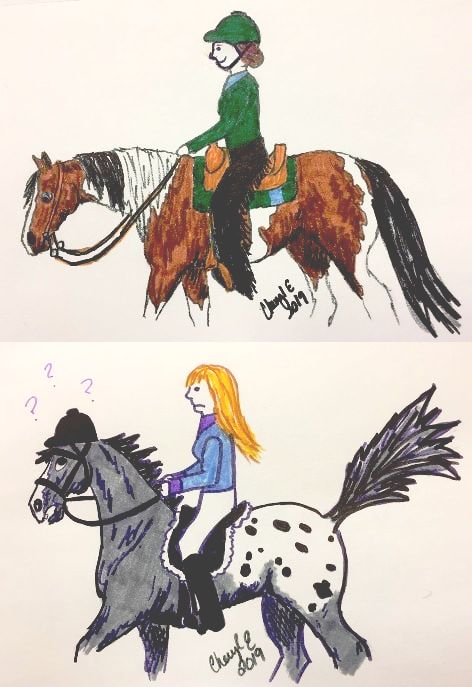
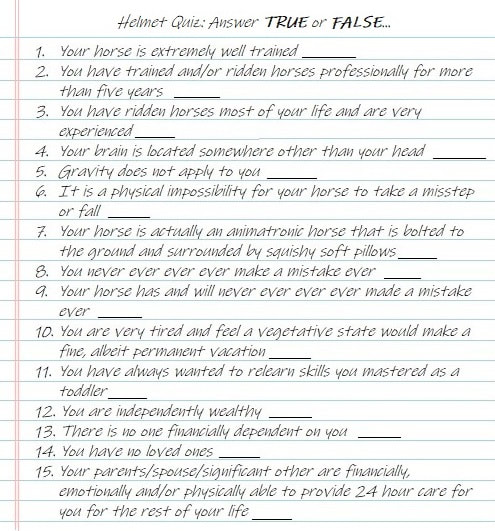
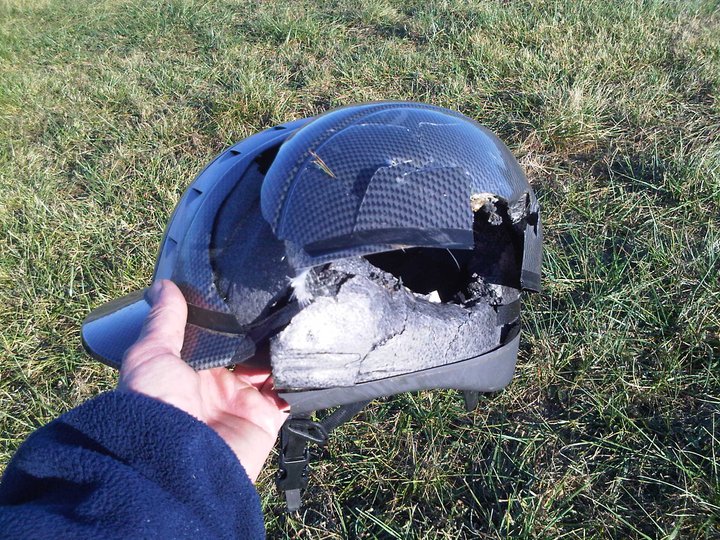
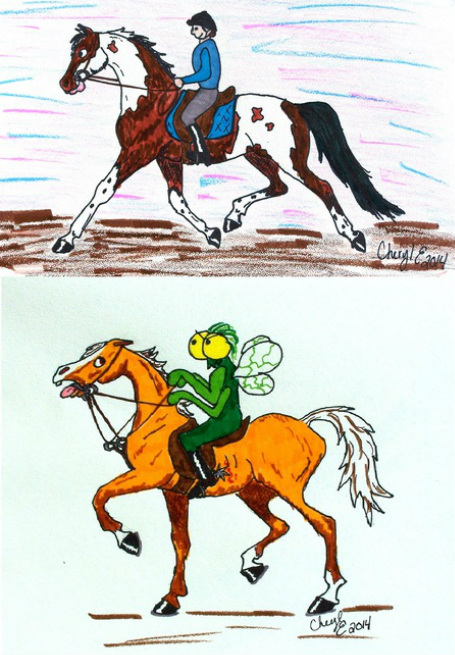
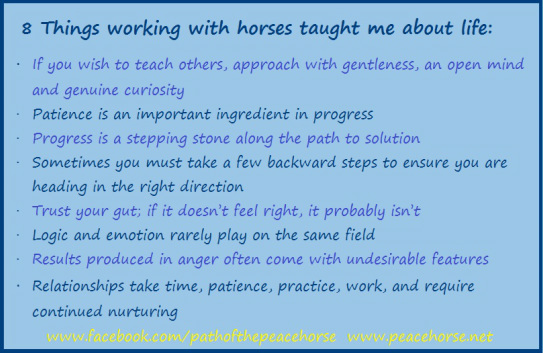
 RSS Feed
RSS Feed
